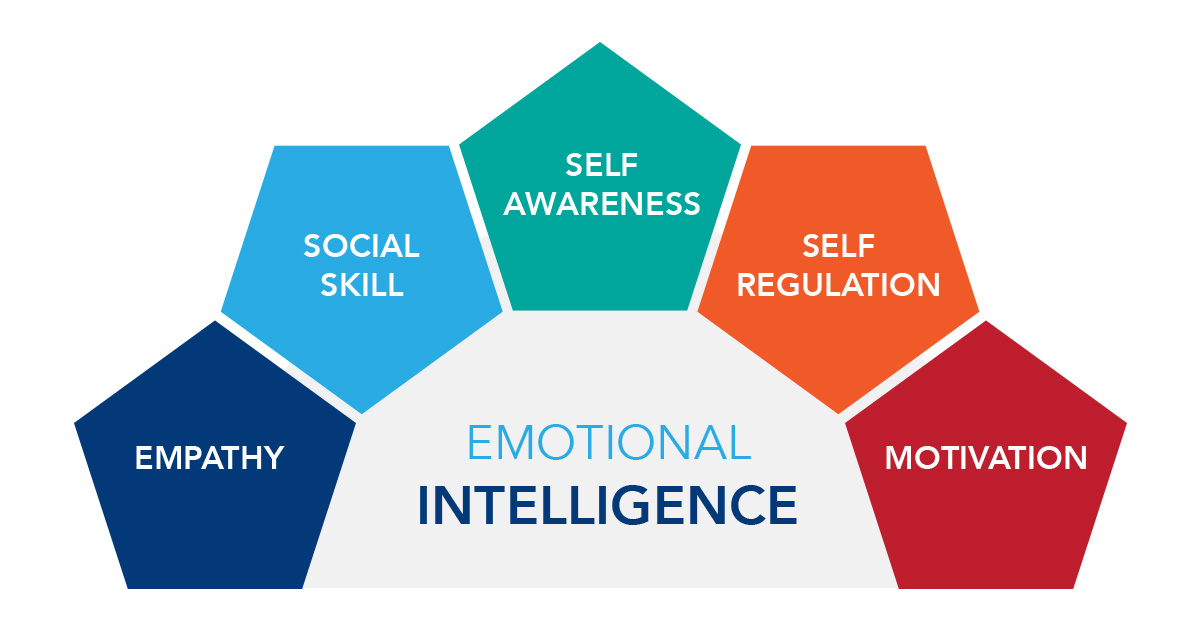Multiple intelligences theory states that everyone has all eight intelligences at varying degrees of proficiency and an individual’s learning style is unrelated to the areas in which they are the most intelligent. Caruso (the latter to a lesser extent) during the early 1990s.

Daniel Goleman's Emotional Intelligence framework [4]. Download
A speculative construct positing the existence of quantifiable cognitive differences in the ways in which typically developed individuals attend to, experience, process, and utilize emotions.the fundamental problem with ability ei is the inherently subjective nature of emotion, which undermines objective measurement using veridical scoring criteria.

Emotional intelligence learning theory. Take a test below to find out how emotionally intelligent you are! There is an obvious connection to goleman’s third, motivational component: 185) were the first to develop a psychological theory of emotional intelligence and introduced eq as a:
The early theory of emotional intelligence described by salovey and mayer in 1990 explained that ei is a component of gardner’s perspective of social intelligence. Emotional intelligence is learned and can be improved. Developing emotional intelligence improves the environment in the classroom as well, making it easier for teachers to teach and students to learn.
Emotional intelligence (ei) refers to the ability to perceive, control, and evaluate emotions. Emotional intelligence can be said to cover five main areas: Mayer and salovey (1997) proposed that ei was a cognitive ability which is separate but also associated to, general intelligence.
The importance of explicitly teaching emotional. It is, of course, important for good communication. This model consists of four different abilities (or branches) including;
Emotional intelligence is a set of skills that are thought to contribute to the appraisal of emotions in oneself and others. That is, it can be activated and deactivated, depending on the emotional and social environment we grow. The more in tune you are with your emotional intelligence.
A reaction tends to be automatic. You’ll learn four key elements of emotional intelligence: Model of emotional and social intelligence.
In his books “emotional intelligence” (1995) and “social intelligence” (2006), the author explains that part of this ability, this capacity, is to be found in our own epigenetics. Esi as a theoretical concept was generally the product of personality psychologist john d. Emotional intelligence also makes an appearance in social/communal constructivism, which asserts that “the level of potential development is the level at which learning takes place…it comprises cognitive structures that are still in the process of maturing, but which can only mature under the guidance of or in collaboration with others.
With a solid basis in emotional intelligence, academic performance — as well as behavior — improves. Learning stimulates curiosity and promotes. Perception of emotion, emotional facilitation, understanding emotions, and management of emotions (mayer & salovey, 1997).
Mayer in association with social psychologist peter salovey and management psychologist david r. Many people have an intuitive grasp of what emotional intelligence is, but for academics, emotional intelligence (eq or ei) has been a notoriously tricky construct to agree on. According to the ability ei model, it is the perception, evaluation, and management of emotions in yourself and others [ 67 ].
It can also help contribute to the effective regulation of emotions as well as feelings (salovey & mayer, 1990). A distinction between emotional intelligence as a trait and emotional intelligence as an ability was introduced in 2000. Since then it has become a widely recognised model for understanding how.
In comparison to emotional intelligence, the idea of an iq tends to be more focused on solving problems. However, prior to this, the term “emotional intelligence” had appeared in leuner (1966). Emotional intelligence is the ability to identify, understand, and use emotions positively to manage anxiety, communicate well, empathize, overcome issues, solve problems, and manage conflicts.
The ability to express and control emotions is essential, but so is the ability to understand, interpret, and. And • able to show a sense of humor and perspective about themselves. Emotional intelligence theory (ei) is a behavioural model first developed in the 1970’s by psychologists howard gardner, peter salovey and john 'jack' mayer, it rose to prominence in 1995 by daniel goleman’s book emotional intelligence.
These researchers coined the notion of esi, and their. According to goleman, bullying, disciplinary problems, violence and drug abuse are reduced in schools with a high eq. Some researchers suggest that emotional intelligence can be learned and strengthened, while others claim it's an inborn characteristic.
Gardner states that learning styles refer to the way an individual is most comfortable approaching a range of tasks and materials. Peter salovey and john mayer (1990, p. Stanley greenspan (1989) also put forward an ei model, followed by salovey and mayer (1990), and daniel goleman (1995).
Situational Leadership Emotional Intelligence Learning Theory

Spirituality for Atheists Emotional intelligence, Spirituality

The 4 Pillars of Emotional Intelligence

Daniel Goleman Emotional Intelligence Why It Can Matter More Than IQ

Emotional Intelligence is the ability to Listen, Accept, Respect and
